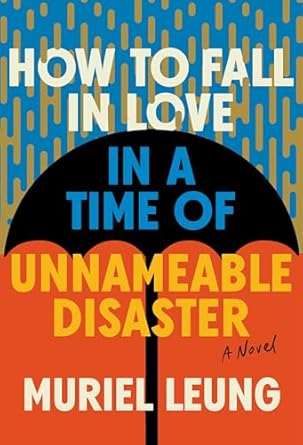HOW TO FALL IN LOVE IN A TIME OF UNNAMEABLE DISASTER

by Muriel Leung
W.W. Norton and Company
(www.wwnorton.com)
2024, 253 pages, $18.99
ISBN 978-1-324-07618-6
Click Here to Purchase
We’ve come to understand in writing about (what can very well be) an unmitigated dystopia caused by dangerous global warming is that, like the flower growing up in a small crack in the asphalt surface, There Will Be Some Good as a result of the milieu that our beloved narrator and characters find themselves in. Oh, really? While the flower growing out of the crack could very well be a thorny Canada Thistle, even though it will eventually sprout a pretty purple flower, it is still mostly a weed, unfortunately.
That’s my take on HOW TO FALL IN LOVE, about a New York City dystopia. The disaster is called the Big Suck. Earthquakes swallow up whole streets and there are acid rains that deplete nutrients from the soil and make everything a living hell. Not to mention that there are ghosts.
Most of the action is reserved for our narrator, Mira, who is in love with Mal, and who lives in Building 4B, Apartment 9A of the Gratuitous Place housing project.
What I don’t understand is why the focus never seems to rest on Mal and the narrator, Mira, who operates a ham radio and tries to stay alive and sane. What caused the Big Suck? (Mira refers to it as the After-After.) Leung gives us little history.
Just when the novel appears to reward us, somewhere along the line, like the thistle and the flower, we spend our time reading it and thinking, it’s just a weed. I need to pull it out. The weed caused by a very disjointed, wandering and sometimes incoherent narrative. That same narrative I found years ago in William Gibson’s NEUROMANCER novel. I had to put the book down too many times, just wondering what was the author trying to do?

